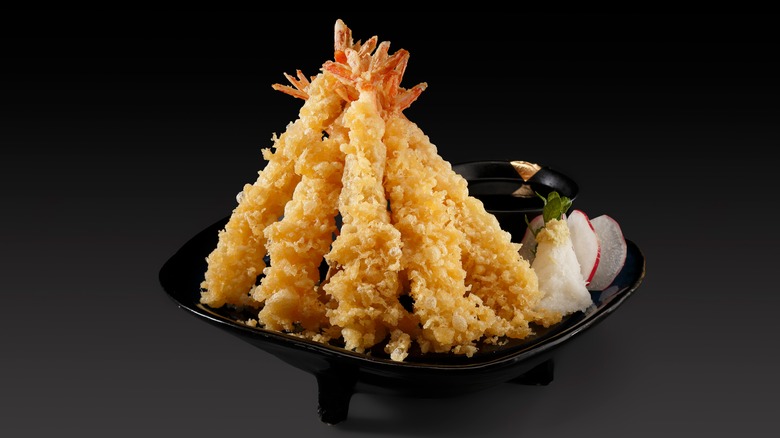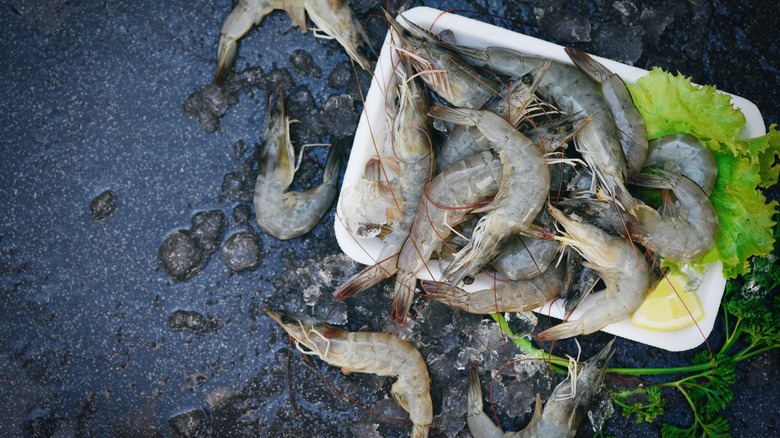The Simple Way To Straighten Shrimp When Making Tempura
Fried foods are a delicacy across the globe. In the United States, you've got fried chicken. In Italy, fried zucchini flowers reign supreme. And in the United Kingdom, scotch eggs highlight crunchy breadcrumbs, sausages, and eggs (per Slurrp). But in Japan, fried foods take on a lighter meaning with tempura.
At its core, tempura consists of a variety of foods, like vegetables and chicken, that are coated in flour or potato starch, then tempura batter, and then deep-fried to perfection, per Umami Cart. Typically, the batter is made of flour, eggs, and very cold water and should have some lumps after mixing. When it comes time for frying, oils like peanut oil, canola oil, and vegetable oil should be used due to their high smoke points. The general frying time is two to five minutes, and the tempura should have a golden color when you remove them from the oil.
Compared to other types of fried foods, tempura isn't as heavy and doesn't require any breadcrumbs, explains Umami Cart. Savor Japan also adds that you don't get that oily mouthfeel either, which is probably why tempura has a lighter taste and texture. This is pretty much true for all types of tempura, which ranges from fried renkon, chikuwa, eggs, and of course, shrimp.
Speaking of shrimp, have you ever noticed that it's usually straightened out before being fried? Here's why chefs utilize this extra step and how you can straighten shrimp at home.
Very easy method
Luckily, any home cook can whip up a cloud-like shrimp tempura dinner in no time at all. But first, one must master the art of straightening out the shrimp. According to MasterClass, all you have to do is take a knife and cut some slits on the bottom of the shrimp. Then, just bend them backwards until they're straight. It's a pretty simple process and should only take a few seconds per shrimp, though food blogger Just One Cookbook offers a few more key points (as well as visual references).
The first note is to remove the shrimp's head and shell but keep the tail part attached. Next, devein the shrimp. For the slits, Just One Cookbook's visuals suggest that the knife doesn't even go halfway down the shrimp, so keeping the slits shallow seems like the way to go. Finally, they mention that the tail of the shrimp should be cut so the top part of the tail has a "V" shape to it.
But why go through these steps to make the shrimp straight anyhow? MasterClass mentions that by doing so, the batter will coat the shrimp better, and the shrimp won't curl up when they're dunked in hot oil. This makes for an aesthetically-pleasing plate of shrimp tempura with flavors that rival those from the best restaurants, all from the comfort of your own home.

